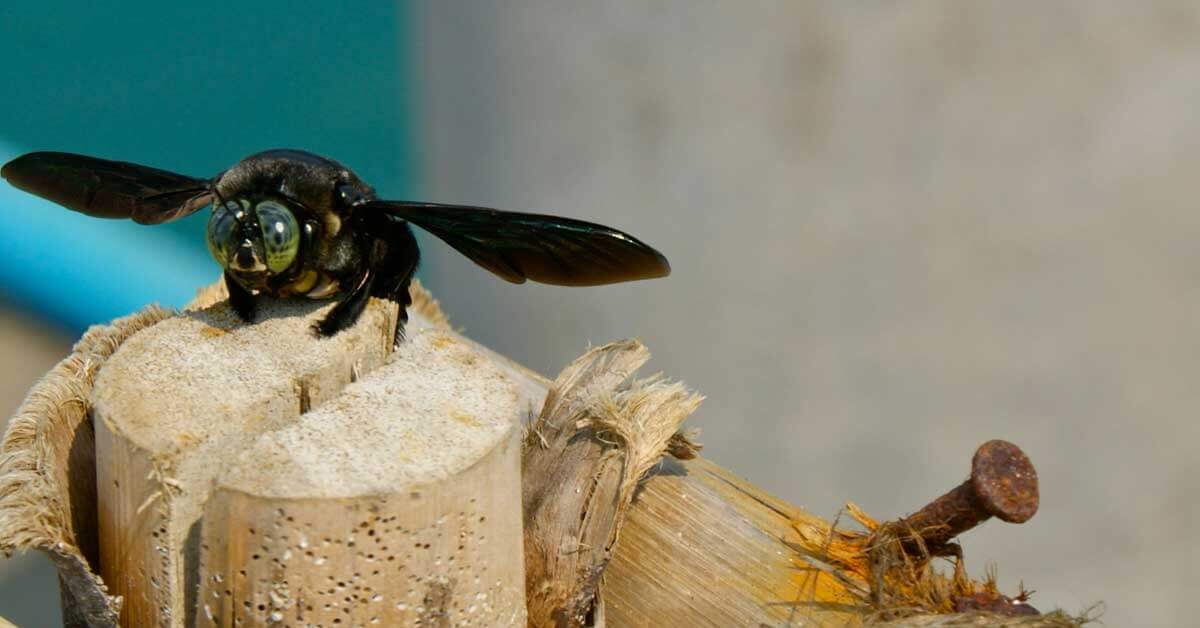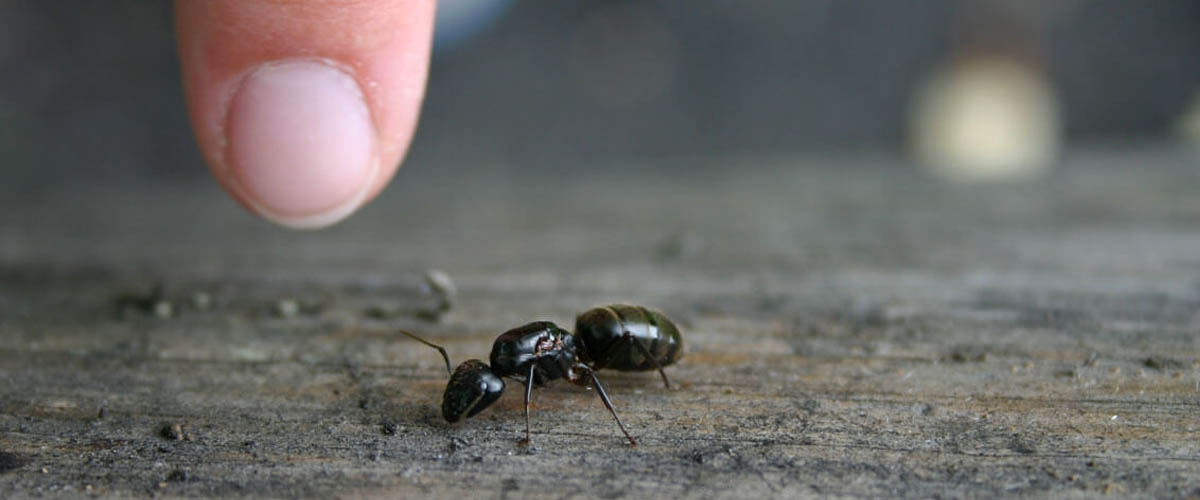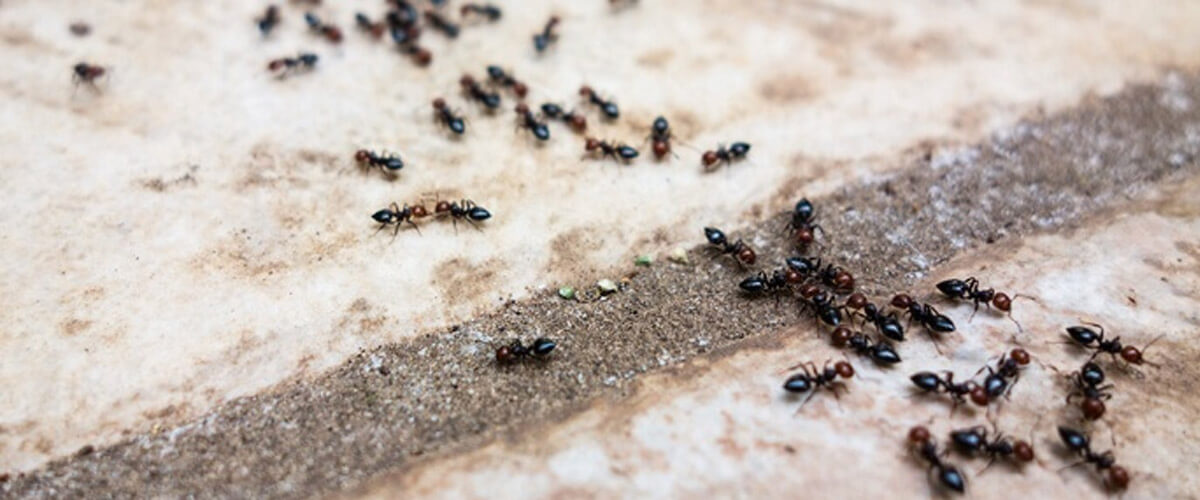How to Kill Carpenter Bees and Identify Their Damage
For homeowners in many parts of the United States, carpenter bees rarely attract attention. When passing near homes, these bees may go unnoticed or be mistaken for other bees. However, homeowners in areas with large carpenter bee populations look at these wood-damaging insects differently. Carpenter bee activities can cause extensive damage to wooden structures, including your home, and threaten their integrity.
IDENTIFYING CARPENTER BEE DAMAGE
Carpenter bees are one of the primary wood-damaging insects in the U.S. While numerous species of these bees are found throughout the country, the eastern states are especially hard hit by Eastern carpenter bees' distinctive damage.
Carpenter bees naturally nest in soft, old trees or even reed-like plants with soft, pithy interiors. But they don't discriminate against inviting wood that happens to be part of your home. Unlike termites, carpenter bees do not eat wood. The damage they cause comes from tunneling into wood to create nesting chambers. The bees bore entry holes about 1 inch deep into their targeted structure.1 Telltale signs of carpenter bee activity include sawdust piles on the ground and excrement stains on the wood below their holes.
Once inside wood, the tunneling bees branch out to create perpendicular tunnels about 4 to 6 inches long. A female carpenter bee creates about six to eight of these chambers, where it will lay its eggs. From the outside, all you see is the hole — almost perfectly round and 1/2 inch in diameter — but a network of hollowed pathways lies inside. Over many years, carpenter bee galleries can expand from several inches up to 10 feet in length.1,2
DISTINGUISHING CARPENTER BEES FROM OTHERS
Eastern carpenter bees are easily distinguished from common honey bees, but they're often confused with bumble bees. Honey bees are European natives, typically slender and near 1/2 inch in length. Their woolly abdomens have bands of golden yellow to brown. At up to 1 inch long, carpenter bees and bumble bees are two of the largest native bees in the United States. While both can have black and yellow hairs, Eastern carpenter bees have shiny black abdomens. Bumble bee abdomens are covered with yellow and black hairs.1
These three types of bees are also very different in their habits. Honey bees, called “social bees," live in very large, communal groups. When they invade homes, they typically inhabit attics or cavities between walls. These groups can number in the tens of thousands.2 Honey bees can also be very aggressive and defensive. Bumble bees are also social bees, but they live in small colonies and nest in the ground. Typically nonaggressive, they stay focused on flowers, not houses or people.
Carpenter bees are not social bees; they live more solitary lives. However, small groups of related bees stay together and remain in the same area for generations. Male carpenter bees cannot sting; however, they will dive repeatedly and aggressively at people and pets that come near.
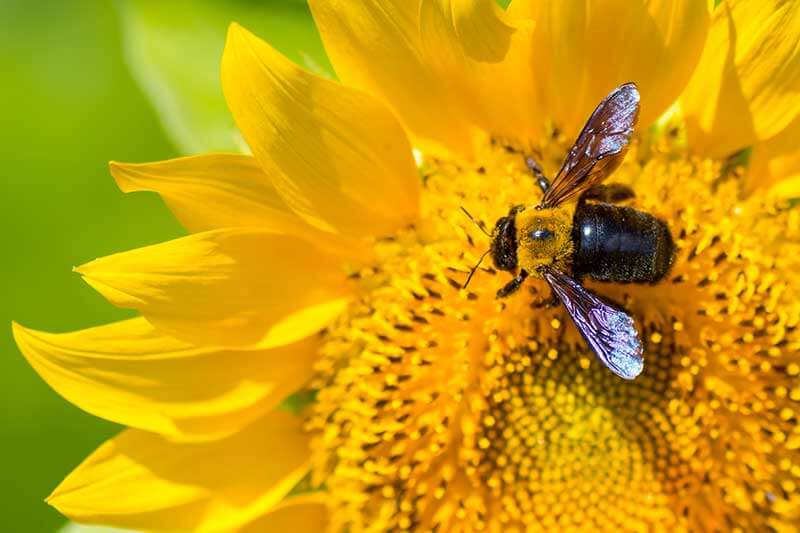
Shiny, black abdomens distinguish Eastern carpenter bees from bumble bees.
TREATING WOOD-DAMAGING CARPENTER BEES
Carpenter bee damage starts with a single entry hole, along with some hidden damage. However, each year the offspring add their own entry holes and hidden nesting chambers to the damage that was there before. When multiple generations or large populations nest in structural wood, carpenter bees become significant threats to your home and other structures.
Effective treatment is essential to stop wood-damaging carpenter bees and prevent further damage. Amdro Quick Kill Carpenter Bee, Ant & Termite Killer Ready To Use is highly effective in controlling these wood-damaging pests. Used according to label instructions, it kills the offending bees quickly and prevents new infestations for up to three months outdoors and 12 months indoors. With Amdro Quick Kill Carpenter Bee, Ant & Termite Killer Foam, you can reach carpenter bees in the foles and crevices where they live.
MINIMIZING FUTURE CARPENTER BEE PROBLEMS
Carpenter bees target unpainted, weathered wood. You can reduce the chances of repeated problems by making your home and surrounding structures inhospitable to them. Wood stains and seals offer some protection, but not as much as paint.1 Wood shingles, shakes, siding, eaves and shutters are all objects of attack, especially when bare or weathered. Garden pergolas, benches and even wooden Adirondack lawn chairs are at risk.
Lessen and limit damage by reducing the number of of exposed and untreated wood items around your home. Paint bare wood — or at least cover it with finishes — and consider using building materials other than natural wood in new projects. You can also provide alternative housing in the form of carpenter bee houses, which include predrilled wooden tunnels designed for nesting. The bees will use their old tunnels or new ones you provide when given the opportunity.
When carpenter bees or other wood-damaging pests jeopardize the integrity and peace of your home, you can put an end to the threat quickly. Amdro is committed to providing you with highly effective products to protect your home and family against pest disruptions and damage.
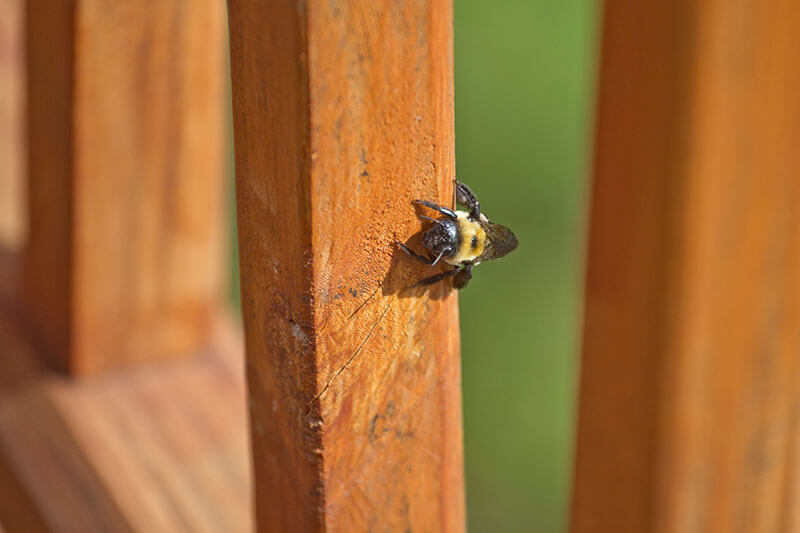
Decks and wooden structures are often subjected to carpenter bee damage.
Always read product labels thoroughly and follow instructions carefully.
Amdro and Amdro Quick Kill are registered trademarks of Central Garden & Pet Company.
Sources:
1. Jacobs, S., "Carpenter Bees," PennState College of Agricultural Sciences, January 2014.
2. Wright, R., Mulder, P. and Reed, H., "Honey Bees, Bumble Bees, Carpenter Bees and Sweat Bees," Oklahoma Cooperative Extension Service.

